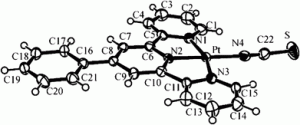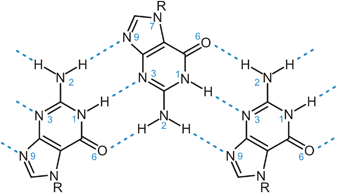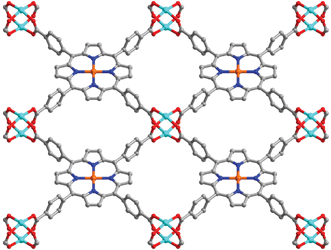 A recent article from John Field and his team at the University of KwaZulu-Natal, South Africa, describes the sorption and sensing properties of a porous material with an unusual crystal structure. The platinum based material has an open framework made up from repeating 2D stacks of [Pt{4′-(Ph)trpy}(NCS)]+ cations (where trpy is 2,2′:6′,2″-terpyridine) that are stabilised by extended π-π interactions. This is somewhat different to the usual coordination compounds that are formed from metal ions linked by bridging organic molecules.
A recent article from John Field and his team at the University of KwaZulu-Natal, South Africa, describes the sorption and sensing properties of a porous material with an unusual crystal structure. The platinum based material has an open framework made up from repeating 2D stacks of [Pt{4′-(Ph)trpy}(NCS)]+ cations (where trpy is 2,2′:6′,2″-terpyridine) that are stabilised by extended π-π interactions. This is somewhat different to the usual coordination compounds that are formed from metal ions linked by bridging organic molecules.
Unlike it’s parent material ([Pt(trpy)(NCS)]SbF6), this compound can reversibly sorb and desorb organic vapours with no disruption of the framework structure which the team attribute to the 4′-phenyl substituent which participates in stabilising π-π interactions with pyridines on the nearby cations.
The solvent accessible voids in [Pt{4′-(Ph)trpy}(NCS)]SbF6
Read this HOT article now:
Sorption of small molecule vapours by single crystals of [Pt{4′-(Ph)trpy}(NCS)]SbF6 where trpy = 2,2′:6′,2′′-terpyridine: a porous material with a structure stabilised by extended π–π interactions
John S. Field, Orde Q. Munro and Bradley P. Waldron


![solvent accessible voids in [Pt{4'-(Ph)trpy}(NCS)]SbF6 solvent accessible voids in [Pt{4'-(Ph)trpy}(NCS)]SbF6](https://blogs.rsc.org/dt/files/2012/03/Pt-terpyridine-complex-solvent-300x145.gif)











